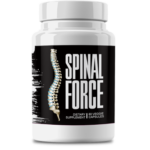This Village-Made Chinese Pain Reliever Eliminates Back And Joint Pain!
Gout in Toes: Myths vs. Facts

Introduction to Gout in Toes
What is Gout in Toes?
Gout in toes is a painful condition caused by the accumulation of uric acid crystals in the joints, particularly the big toe. This condition is a type of inflammatory arthritis that results from hyperuricemia, where uric acid levels in the blood are elevated. When these crystals form in the joints, they trigger intense pain, swelling, redness, and tenderness. Gout can severely impact mobility and quality of life, making it essential to understand and manage the condition properly. Despite its severity, many people still hold misconceptions about gout in toes.
Prevalence and Demographics
Gout in toes is a common condition, particularly among adults. According to recent statistics, gout affects approximately 4% of the adult population in the United States. Men are more likely to develop gout than women, though the risk for women increases after menopause. Age is a significant factor, with most cases occurring in individuals over the age of 30. However, younger people are not immune, especially if they have a family history or other risk factors. Understanding the demographics helps in targeting awareness and prevention efforts effectively.
Importance of Addressing Myths
Debunking myths about gout in toes is crucial for several reasons. Misconceptions can lead to delayed diagnosis and inappropriate treatment, exacerbating the condition. Myths can also contribute to stigma, making individuals hesitant to seek medical help. By addressing and clarifying these myths, we can promote better understanding and management of gout. Accurate information empowers individuals to take proactive steps in prevention and treatment, ultimately improving their quality of life. Let’s explore some common myths and the actual facts about gout in toes.
Common Myths about Gout in Toes
Myth: Gout Only Affects the Elderly
One prevalent myth is that gout is an old person’s disease. While it’s true that gout is more common in older adults, it can affect individuals of all ages. Factors such as genetics, obesity, and certain medical conditions can increase the risk at a younger age. Gout can even occur in people in their 20s and 30s, especially if they have a family history of the condition. Recognizing that gout is not age-specific helps in early diagnosis and appropriate management, regardless of the patient’s age.
Myth: Gout is Just a Fancy Term for Arthritis
Another myth is that gout is simply another name for arthritis. While gout is a form of arthritis, it is unique due to its cause and symptoms. Unlike osteoarthritis or rheumatoid arthritis, gout results from the crystallization of uric acid in the joints. This leads to sudden and severe pain, often in the big toe. Understanding this distinction is important for proper diagnosis and treatment. Gout requires specific management strategies that differ from other types of arthritis, making it essential to recognize its unique characteristics.
Myth: Gout in Toes is Caused by Poor Hygiene
A common yet unfounded myth is that poor hygiene causes gout in toes. Gout is not related to cleanliness; it is a metabolic disorder. The primary cause is the buildup of uric acid in the blood, leading to crystal formation in the joints. Factors such as diet, genetics, and certain medications play a significant role in its development. Misinformation about hygiene can lead to unnecessary guilt and shame for those suffering from gout. It’s important to focus on the real causes to manage and prevent the condition effectively.
Facts about Gout in Toes
Fact: Gout is a Form of Arthritis
It’s a fact that gout is a type of arthritis, specifically inflammatory arthritis. Unlike other forms of arthritis, gout is caused by the deposition of uric acid crystals in the joints. These deposits trigger an inflammatory response, leading to the characteristic pain and swelling. Recognizing gout as a form of arthritis helps in understanding its symptoms and treatment. It also underscores the importance of distinguishing it from other types of arthritis, as the management strategies for gout are unique to its underlying causes.
Fact: Gout Can Affect Anyone
Gout can affect anyone, regardless of age, gender, or socio-economic status. While it is more common in men and older adults, women and younger individuals are not immune. Risk factors such as family history, obesity, and certain health conditions can increase the likelihood of developing gout. It’s essential to be aware of these factors and take preventive measures, such as maintaining a healthy diet and weight. Early recognition and intervention can significantly reduce the impact of gout on one’s life.
Fact: Gout is Linked to Diet and Genetics
Diet and genetics play a significant role in the development of gout. Foods high in purines, such as red meat, seafood, and alcohol, can increase uric acid levels in the blood. Genetics also influence how efficiently the body processes and eliminates uric acid. If you have a family history of gout, your risk is higher. Understanding these links can help in making informed lifestyle choices to prevent or manage gout. A balanced diet and awareness of genetic predispositions are key to reducing the risk of gout flare-ups.
Symptoms and Diagnosis of Gout in Toes
Common Symptoms
Gout in toes typically presents with sudden, intense pain in the affected joint, often the big toe. The pain is usually accompanied by swelling, redness, and warmth. These symptoms often occur at night and can be severe enough to wake a person from sleep. The affected joint may become stiff and difficult to move. Gout attacks can last for days or even weeks, with the first 24 hours being the most painful. Recognizing these symptoms early can lead to prompt diagnosis and treatment, reducing the severity and frequency of attacks.
How Gout is Diagnosed
Diagnosing gout involves a combination of clinical evaluation, medical history, and diagnostic tests. A healthcare provider will assess the patient’s symptoms and may perform a physical examination of the affected joint. Blood tests to measure uric acid levels can provide supportive evidence. However, the definitive diagnosis is often made by examining synovial fluid from the affected joint under a microscope to identify uric acid crystals. Imaging tests like X-rays or ultrasounds may also be used to assess joint damage and crystal deposits. Early and accurate diagnosis is crucial for effective management.
Importance of Early Diagnosis
Early diagnosis of gout is essential for several reasons. Prompt identification allows for immediate treatment to relieve pain and inflammation, preventing further joint damage. Early intervention can also reduce the frequency and severity of future gout attacks. Additionally, recognizing gout early helps in managing associated health conditions, such as hypertension and kidney disease, which are common in individuals with gout. Timely diagnosis and treatment can significantly improve quality of life and prevent long-term complications, making it a critical step in managing the condition effectively.
Treatment Options for Gout in Toes
Medications
Medications are a cornerstone of gout treatment. Nonsteroidal anti-inflammatory drugs (NSAIDs) are commonly prescribed to reduce pain and inflammation during acute attacks. Colchicine and corticosteroids are alternative options for those who cannot tolerate NSAIDs. Long-term management often involves medications that lower uric acid levels, such as allopurinol or febuxostat. These medications help prevent future gout attacks and reduce the risk of complications. It’s important to follow the prescribed treatment plan and consult with a healthcare provider to adjust medications as needed for optimal management.
Lifestyle Changes
In addition to medications, lifestyle changes play a crucial role in managing gout. Maintaining a healthy weight can significantly reduce the risk of gout attacks. A balanced diet low in purines, which are found in red meat, seafood, and alcohol, can help manage uric acid levels. Staying hydrated is also important, as it aids in the elimination of uric acid from the body. Regular physical activity can improve overall health and reduce the frequency of gout attacks. Lifestyle modifications, combined with medical treatment, offer a comprehensive approach to managing gout.
Alternative Treatments
Some individuals seek alternative treatments to complement conventional gout management. Herbal remedies, such as cherry extract and turmeric, have anti-inflammatory properties that may help reduce gout symptoms. Acupuncture and massage therapy can also provide pain relief and improve joint function. It’s important to discuss any alternative treatments with a healthcare provider to ensure they are safe and effective. Combining alternative therapies with traditional medical treatments can offer a holistic approach to managing gout, improving overall well-being and quality of life.
Preventing Gout in Toes
Dietary Recommendations
Diet plays a significant role in preventing gout in toes. Reducing the intake of purine-rich foods, such as red meat, organ meats, and certain seafood, can help lower uric acid levels. Opting for low-fat dairy products, whole grains, and plenty of fruits and vegetables can also be beneficial. Limiting alcohol, especially beer, is crucial as it can increase uric acid production. Staying hydrated by drinking plenty of water helps in flushing out uric acid from the body. A balanced diet not only prevents gout attacks but also promotes overall health.
Importance of Hydration
Staying well-hydrated is essential in preventing gout. Drinking plenty of water helps dilute uric acid in the blood, reducing the likelihood of crystal formation in the joints. Aim to drink at least eight glasses of water a day, more if you engage in physical activity or live in a hot climate. Avoiding sugary drinks and alcohol can further help maintain proper hydration and uric acid levels. Incorporating hydration into your daily routine is a simple yet effective strategy to prevent gout attacks and maintain overall health.
Regular Monitoring and Check-ups
Regular monitoring and medical check-ups are vital for individuals at risk of or already diagnosed with gout. Routine blood tests can help track uric acid levels and adjust treatment plans as needed. Regular check-ups with a healthcare provider ensure that any changes in symptoms are promptly addressed. Monitoring other health conditions, such as hypertension and diabetes, which are often associated with gout, is also important. Staying proactive with regular medical visits can prevent complications, optimize treatment, and improve overall health outcomes.
Living with Gout in Toes
Coping Strategies
Living with gout in toes requires effective coping strategies to manage pain and maintain mobility. During acute attacks, resting the affected joint and applying ice packs can provide relief. Elevating the foot and keeping it immobilized can also help reduce swelling. Wearing comfortable, supportive footwear can prevent additional stress on the joints. Pain management techniques, such as deep breathing exercises and meditation, can help cope with chronic pain. Developing and implementing these strategies can improve daily function and enhance quality of life for those living with gout.
Support Networks and Resources
Having a strong support network is beneficial for individuals living with gout. Family and friends can provide emotional support and assist with daily tasks during flare-ups. Joining support groups, either in-person or online, can connect individuals with others who understand their experiences. These groups offer a platform to share tips, advice, and encouragement. Accessing resources, such as educational materials and professional counseling, can further aid in managing the condition. Building a robust support system can make living with gout more manageable and less isolating.
Long-term Management
Long-term management of gout involves a combination of medical treatment, lifestyle changes, and regular monitoring. Adhering to prescribed medications and maintaining a healthy diet are fundamental aspects. Regular physical activity and weight management can also play a significant role. Monitoring uric acid levels and other associated health conditions through routine check-ups ensures that any changes are promptly addressed. Educating oneself about gout and staying informed about new treatments and strategies can further aid in effective long-term management. Consistent and comprehensive management can significantly improve quality of life.
Conclusion
Recap of Myths vs. Facts
Understanding the myths and facts about gout in toes is crucial for effective management. While common myths suggest that gout only affects the elderly, is merely a form of arthritis, or is caused by poor hygiene, the facts reveal a more complex picture. Gout is a form of arthritis that results from uric acid crystal buildup, can affect individuals of all ages, and is influenced by diet and genetics. Dispelling these myths helps in recognizing the condition early and seeking appropriate treatment.
Encouragement for Proper Management
Proper management of gout requires a multifaceted approach. Adhering to medical treatments, making necessary lifestyle changes, and staying informed about the condition are key components. Early diagnosis and intervention can prevent severe complications and improve quality of life. Support networks and educational resources can provide additional assistance. By taking proactive steps and working closely with healthcare providers, individuals can effectively manage gout and lead fulfilling lives.
Final Thoughts
Gout in toes is a manageable condition with the right knowledge and strategies. Dispelling myths and understanding the facts empower individuals to take control of their health. Through a combination of medical treatment, lifestyle modifications, and support, living with gout can become less challenging. By staying informed and proactive, individuals can minimize the impact of gout on their lives and enjoy better health and well-being. Always consult with healthcare professionals for personalized advice and treatment plans tailored to individual needs.








